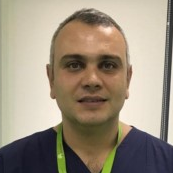Diagnosis and Management in Digestive Surgery
A special issue of Diagnostics (ISSN 2075-4418). This special issue belongs to the section "Pathology and Molecular Diagnostics".
Deadline for manuscript submissions: closed (31 March 2024) | Viewed by 7160
Special Issue Editors
Interests: surgical oncology; laparoscopic surgery; colorectal surgery
Special Issue Information
Dear Colleagues,
This Special Issue is intended to serve as an opportunity to provide an update in terms of the diagnosis and management of digestive diseases. We have all witnessed to some extent the technical and technological development within the medical field. Nevertheless, due to rapid changes, self-actualization can be occasionally strenuous. The methods of diagnosis but also management have undergone serious modifications with the passage of time, hence the utility of this Special Issue. Whether we are talking about improved precision when determining the type of pathology or tailored multidisciplinary treatment, the field of digestive diseases is in constant change. Interesting diagnoses or fascinating management techniques can be submitted as an article for publication. Research articles, review articles, and special case reports are invited.
Dr. Valentin Calu
Dr. Florin Grama
Guest Editors
Manuscript Submission Information
Manuscripts should be submitted online at www.mdpi.com by registering and logging in to this website. Once you are registered, click here to go to the submission form. Manuscripts can be submitted until the deadline. All submissions that pass pre-check are peer-reviewed. Accepted papers will be published continuously in the journal (as soon as accepted) and will be listed together on the special issue website. Research articles, review articles as well as short communications are invited. For planned papers, a title and short abstract (about 100 words) can be sent to the Editorial Office for announcement on this website.
Submitted manuscripts should not have been published previously, nor be under consideration for publication elsewhere (except conference proceedings papers). All manuscripts are thoroughly refereed through a single-blind peer-review process. A guide for authors and other relevant information for submission of manuscripts is available on the Instructions for Authors page. Diagnostics is an international peer-reviewed open access semimonthly journal published by MDPI.
Please visit the Instructions for Authors page before submitting a manuscript. The Article Processing Charge (APC) for publication in this open access journal is 2600 CHF (Swiss Francs). Submitted papers should be well formatted and use good English. Authors may use MDPI's English editing service prior to publication or during author revisions.
Keywords
- digestive diseases
- novel changes in diagnosis
- updates on daily practice
- management of digestive diseases







